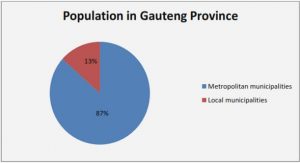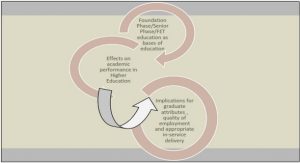Get Complete Project Material File(s) Now! »
Traumatic Fantasy
According to Freud (2015:817) the hysteric is remarkably prone to fantasy and reality and unreality interpenetrate and become indistinguishable in her mind (1963:374; 2015:1639). Breuer and Freud illustrate the manner in which fantasy is pervasive in hysteria by referring to the example of the hysteric, Anna O, who constantly indulged in “systematic day-dreaming, which she described as her ‘private theatre’” (2015:12).2 Freud (2015:817) considers fantasy to be ubiquitous in hysteria; it is posited as simultaneously being the cause and the symptom of hysteria. According to Freud (2015:671), psychic reality can have a pathogenic effect, and an immoderate indulgence in fantasy can, in susceptible persons, lead to the onset of (other) hysterical symptoms. Freud (2015:817) associates hysterical fantasy with trauma as well as desire. The hysteric enjoys weaving fantastical narratives and fantasy does not only function to co-ordinate her desire, it also serves as a means by which her desire can, in a compromised manner, be articulated (Freud 2015:817; Laplanche & Pontalis 1973:318; Žižek 1989:118). However, fantasy also has a traumatic aspect; the hysteric often indulges, obscenely, in the kernel of traumatic knowledge contained in fantasy, as both Slavoj Žižek (1989:74) and Bronfen (1998:149) note. Fantasy (to some extent) allows the hysteric access to repressed traumatic knowledge, from which she may derive traumatic enjoyment, that is, jouissance (Bronfen 1998:149; Žižek 1989:74).3 Jouissance is associated with pleasurable pain, as is characteristic of the enjoyment which may be derived from proximity to the hidden and traumatic knowledge represented by the symptom (Lacan 2007:18; 1999:3). Hysterical fantasy both derives from, and screens from trauma (Freud 1955b:34). Fantasies are “psychical facades constructed to bar memories – even as they help refine memories […]” (Bronfen 1998:37); hysterical fantasies originate in traumatic memories and are intended to mediate their traumatic content (Freud 1955b:34). According to Freud (2015:670) the precipitating trauma is not always a real event; it may in itself be fictitious, that is, the trauma may itself be a fantasy. Although Freud initially conceives of hysterical symptoms as being derived from actual events that have been perceived as traumatic, as “direct derivatives of the repressed memories of childhood experiences” (2015:670), he later determines that symptoms are frequently precipitated by imagined memories. Freud describes the manner in which hysterical symptoms often emerge in response to fantasmatic memories, by stating: “If hysterical subjects trace back their symptoms to traumas that are fictitious, then the new factor that emerges is that they create such scenes in phantasy” (2015:1205).4
Hysterical subjectivity
The characteristics of the hysterical subject are delineated below. It will emerge that the hysterical subject is decentred and fragmented: The hysteric exemplifies the Lacanian concept of the divided subject and is prone to disturbances of the personality, including hysterical splitting and transitivism. My examination of the characteristics of the hysterical subject will form a basis for the subsequent analysis of the hysteric in relation to the surrealist subject. Verhaeghe (1999:144) asserts that the hysteric is a hyperbolic example of the divided subject. Lacan’s (1977b:165) concept of the subject as being divided implies that the subject is not an autonomous and coherent whole, but has been riven by the Other (the Symbolic). The concept of the divided subject disrupts the « place man assigns to himself at the centre of a universe » (Lacan 1977b:165), because it implies that (normal) subjectivity develops in a manner which is radically dependant on the Other. It indicates that the subject‘s unconscious is structured by the Other and implies that the Other forms the basis of the subject’s desire and identification (Lacan 1977b:172). The subject does not come into being as a fully present essence, but is constituted through the Symbolic, which regulates his or her development (Lacan 1977b:141, 234). The unconscious, structured by language, is the locus of the Other, so that the self is invaded by the Other. The Other cannot be conceived as being merely an external force, acting upon the subject from outside; the Other is also a force internal to the subject, comprising the unconscious (Lacan 1977b:172). A further cognate of the divided subject is that such a subject is also a desiring subject. Lacan states: “man’s desire is the desire of the Other” (1977c:235); that is, the subject’s desire is to be the object of the O/other’s desire, and to be recognised by the O/other. Lacan’s statement also implies that the subject desires from the point of view of the O/other (Evans 1996:38).
Chapter 1: Introduction
1.1 Background to the study
1.2 Aims and research questions
1.3. The theoretical approach of the study
1.4 The research methodology
1.5 A review of literature and the visual examples
1.6. Outline of chapters
Chapter 2: Fantasy in surrealism and hysteria
2.1 Introduction
2.2 Traumatic Fantasy
2.3 The object of fantasy
2.4 Fantasy and the body
2.5 Conclusion
Chapter 3: The convulsive subject: Hysteria and surrealism displayed
3.1 Introduction
3.2 Hysterical subjectivity
3.3 The divided surrealist subject
3.4 Convulsive identity
3.5 Convulsive doubling
3.6 Fragmentation embodied: the corps morcelé
3.7 Conclusion
Chapter 4: Surrealism and hysteria: Enigmatic representation as response to trauma
4.1 Introduction
4.2 Enigmatic signification in surrealism and hysteria
4.3 Condensation and displacement in hysteria and surrealism
4.4 Convulsive beauty
4.5 Bellmer’s illustration for Oeillades ciselées en branche
4.6 Conclusion
Chapter 5: Hysterical omphalic representation in surrealist traumatic realism
5.1. Introduction
5.2. Omphalic hysterical representation
5.3. Traumatic realism
5.4. Traumatic realism as an instance of hysterical omphalic representation
5.5. Conclusion
Chapter 6: Hysterical surrealism in Mary Sibande’s portrayal of Sophie
6.1 Introduction
6.2. Sophie’s traumatic fantasies and memories
6.3 The uncanny
6.4 Enigmatic signification, condensation and displacement
6.5 Embodied trauma
6.6 Mimicry: Traumatic realism and omphalic signification
6.7 Conclusion
Chapter 7: Conclusion
Sources consulted






